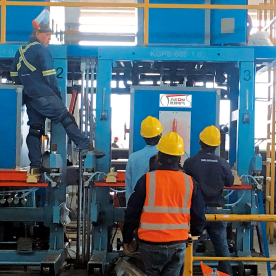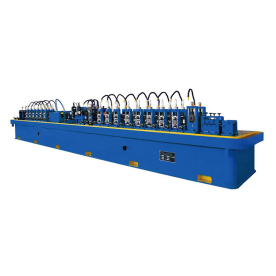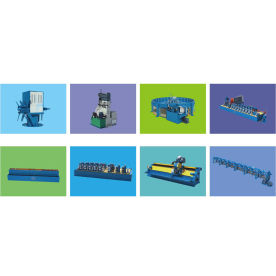[Induction heating equipment]Understanding Induction Heating Equipment: How It Works and Its Applications Across Various Industries
News 2025-1-6
Induction heating equipment has revolutionized the way industries approach metal processing, soldering, and various heating applications. This technology utilizes electromagnetic induction to heat conductive materials, providing a highly efficient and precise method for achieving desired temperatures. In this article, we will delve deep into the working principles of induction heating equipment, explore its various applications, and discuss its advantages in modern manufacturing and processing.
What is Induction Heating?
Induction heating is a process that uses electromagnetic fields to generate heat within conductive materials without directly contacting them. The equipment typically consists of a power supply, induction coil, and a workpiece. The power supply creates an alternating current, which flows through the induction coil, creating a magnetic field. When a conductive material is introduced into this magnetic field, eddy currents are induced within the material, leading to rapid heating.
Working Principle of Induction Heating Equipment
The efficiency of induction heating equipment stems from Faraday's law of electromagnetic induction. When an alternating current passes through the coil, it generates a magnetic field that varies with time. When a metal object (like steel, copper, or aluminum) is placed within this field, eddy currents are induced. The resistance to these currents causes the object to heat up. This heating occurs quickly and uniformly, making induction heating ideal for various processes.
Induction heating is particularly effective for surface heating, such as in hardening or brazing, where only the surface of the metal needs to be heated to achieve specific properties. The depth of the heating can be controlled by adjusting the frequency of the alternating current; higher frequencies produce heat at the surface, while lower frequencies can penetrate deeper.
Applications of Induction Heating Equipment

Understanding Induction Heating Equipment: How It Works and Its Applications Across Various Industries
2. **Heat Treatment**: Induction hardening and annealing processes benefit from the precision induction heating equipment provides. For instance, steel parts can be hardened by quickly heating them and then quenching them in water or oil, allowing for enhanced hardness and performance.
3. **Cooking Appliances**: Beyond industrial uses, induction heating has made its way into home kitchens. Induction cooktops use this technology to heat cookware without heating the cooktop surface itself. This provides safety benefits, as it reduces the risk of burns.
4. **Forging and Casting**: Induction heating equipment is used to heat metals to their forging temperatures efficiently. In casting, it aids in maintaining metal temperatures for easier flow into molds, enhancing production quality and speed.

Understanding Induction Heating Equipment: How It Works and Its Applications Across Various Industries
Advantages of Induction Heating Equipment

Understanding Induction Heating Equipment: How It Works and Its Applications Across Various Industries
2. **Control and Precision**: Induction heating equipment allows for precise temperature control, making it possible to achieve consistent results across batches. This is critical in industries that require tight tolerances and repeatable processes.
3. **Environmentally Friendly**: Since induction heating does not produce flames or emissions like fossil fuel heating methods, it is considered a cleaner alternative. The reduction of smoke and toxic fumes contributes to safer workplace environments.
4. **Reduced Heat Affected Zone (HAZ)**: The localized heating produced by induction minimizes the heat-affected zone, resulting in less distortion and residual stress in the metal components.
Conclusion
Induction heating equipment stands out as a modern heating solution across various industries due to its efficiency, precision, and environmental benefits. As technology advances, its applications continue to expand, offering innovative solutions to traditional heating challenges. The ability to provide rapid heating without direct contact opens new avenues for manufacturing and processing, establishing induction heating as a critical component in the future of industrial operations. As industries continue to evolve, the demand for effective and efficient heating methods like induction heating will undoubtedly grow, making it a vital area for continued investment and development.
